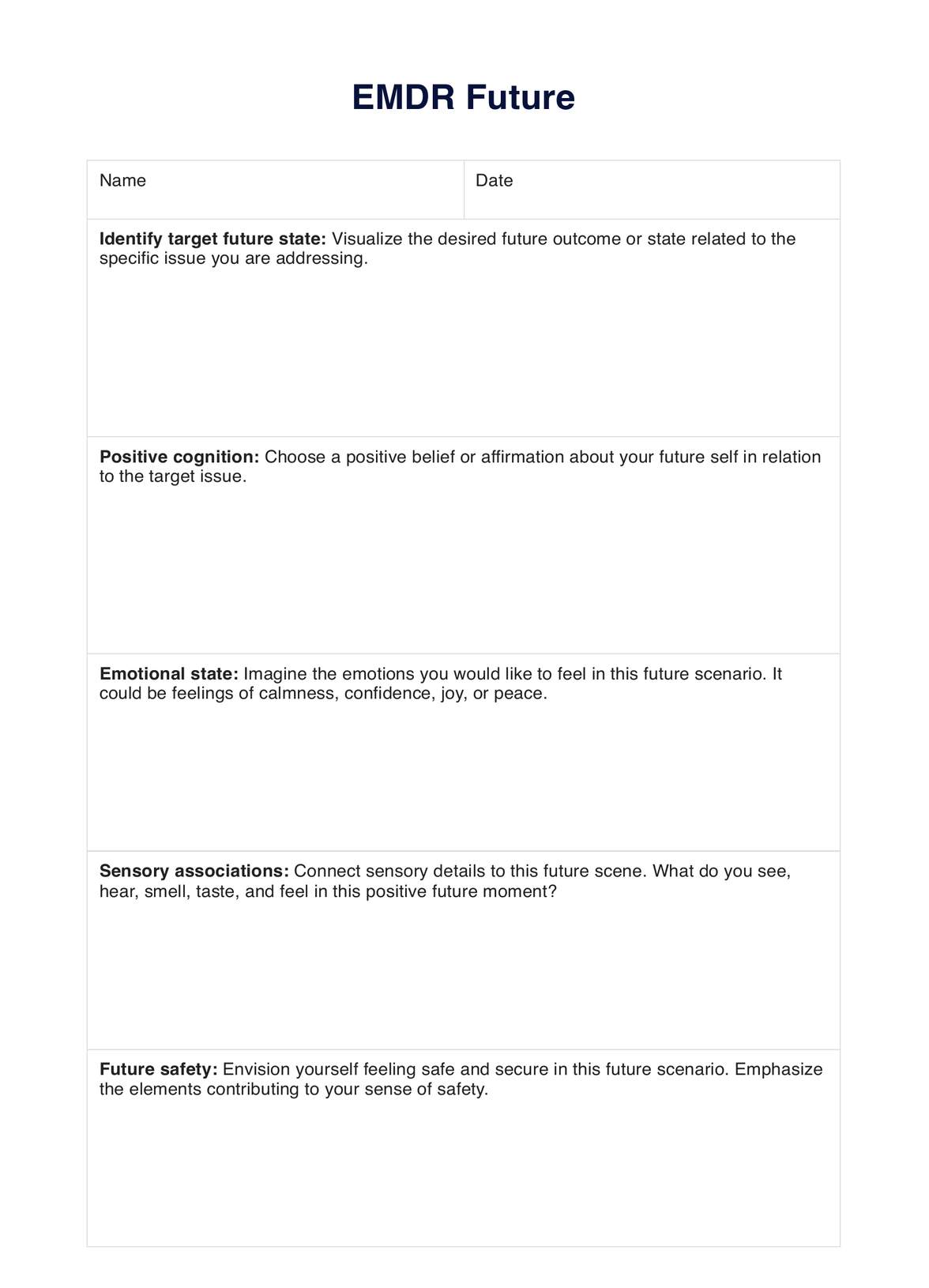Therapists may use EMDR Future Templates for clients who have not yet experienced a traumatic event but are at risk due to their current life circumstances or symptoms. It can also be used as a preventative approach to help strengthen coping skills and resilience.

EMDR Future
Access a free EMDR Future Template for your practice. Learn how to use this worksheet and help clients visualize their future using EMDR therapy.
EMDR Future Template
Commonly asked questions
EMDR is generally considered safe and does not have any known adverse side effects. However, some clients may experience temporary discomfort or heightened emotions during the session, but this is usually short-lived and part of the healing process.
Yes! Carepatron's EMDR Future Template is fully customizable, allowing therapists to tailor the template to their client's needs. This can include adding or removing elements and personalizing the wording for a more individualized approach.
EHR and practice management software
Get started for free
*No credit card required
Free
$0/usd
Unlimited clients
Telehealth
1GB of storage
Client portal text
Automated billing and online payments











